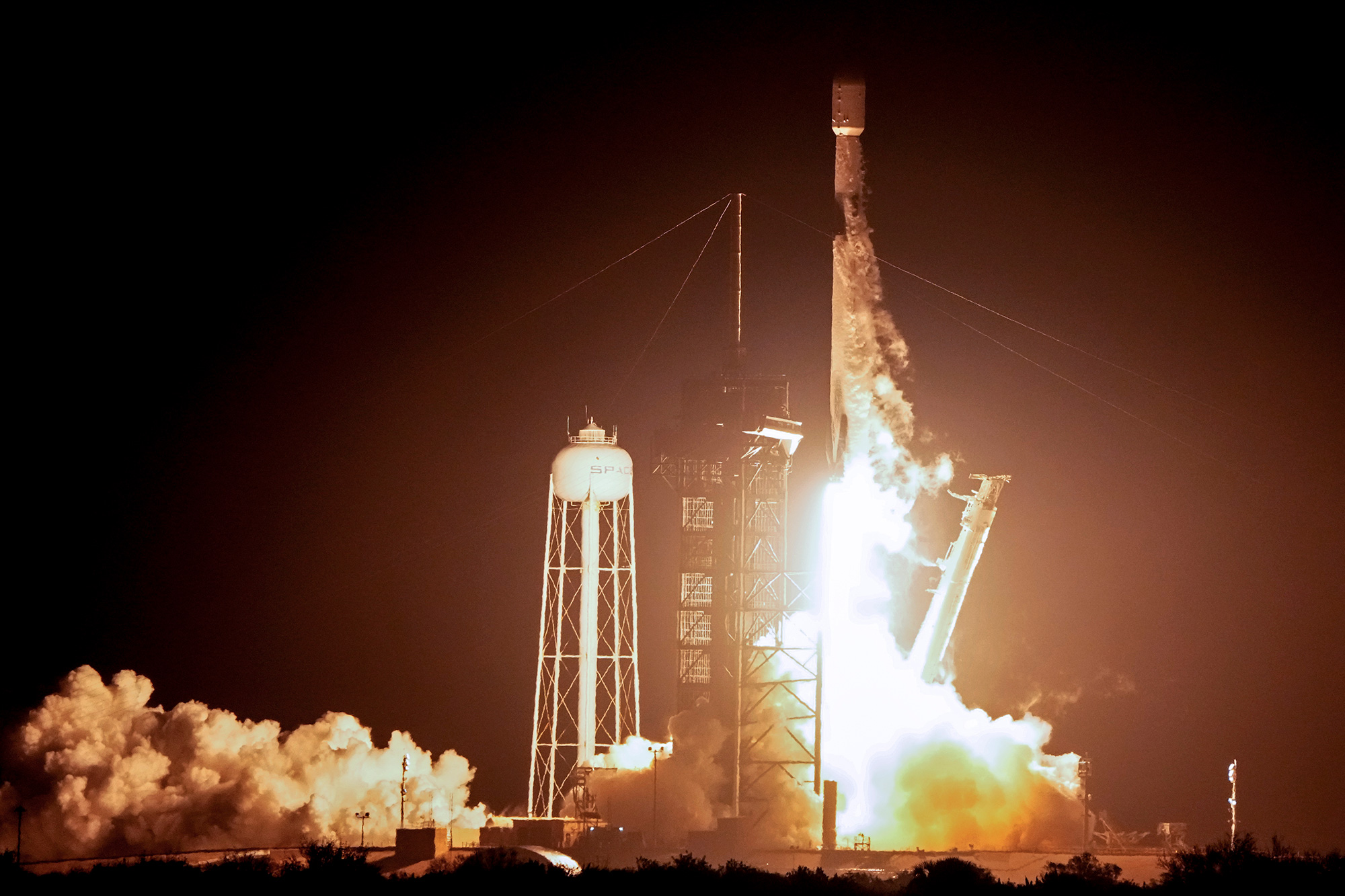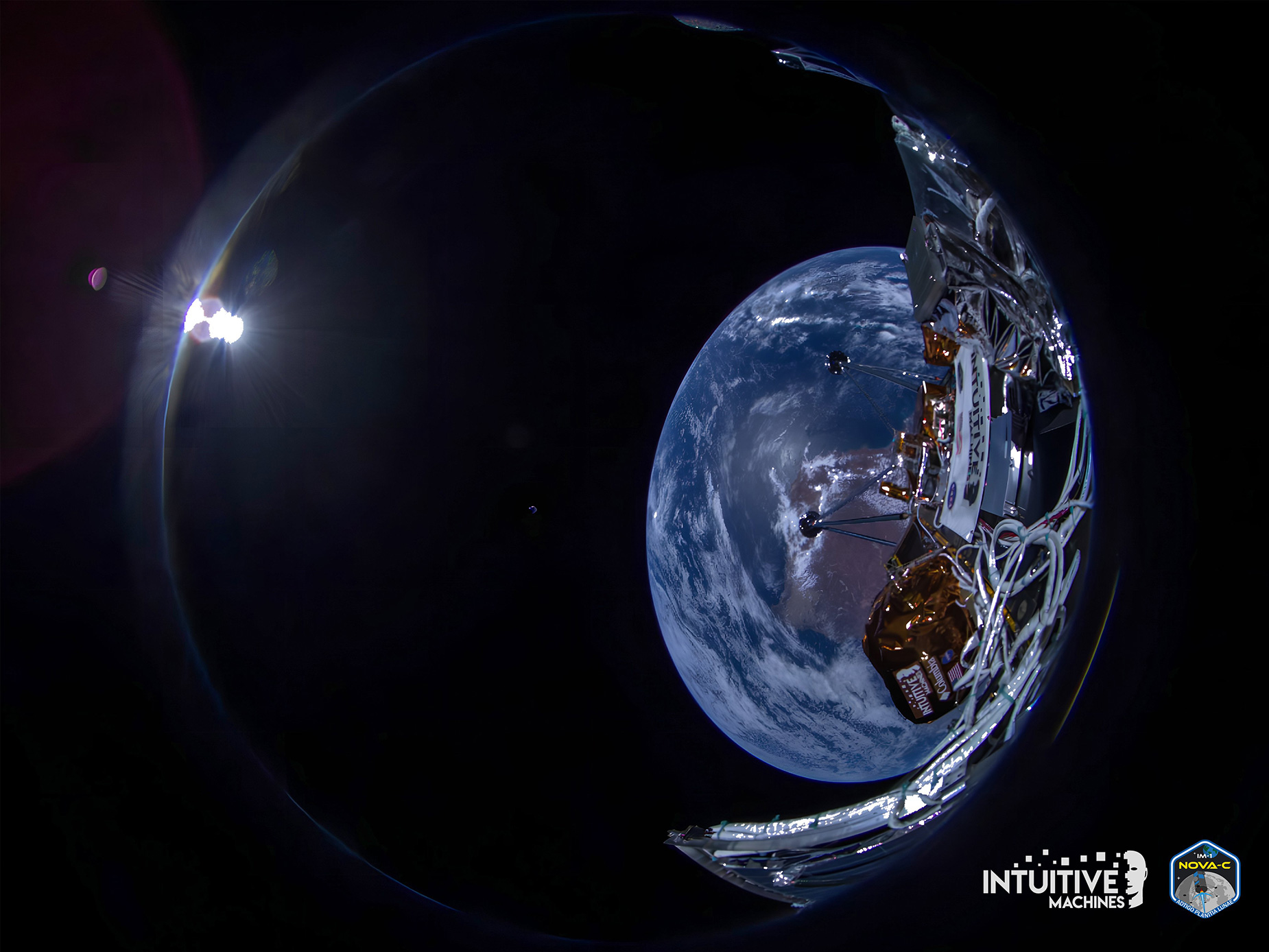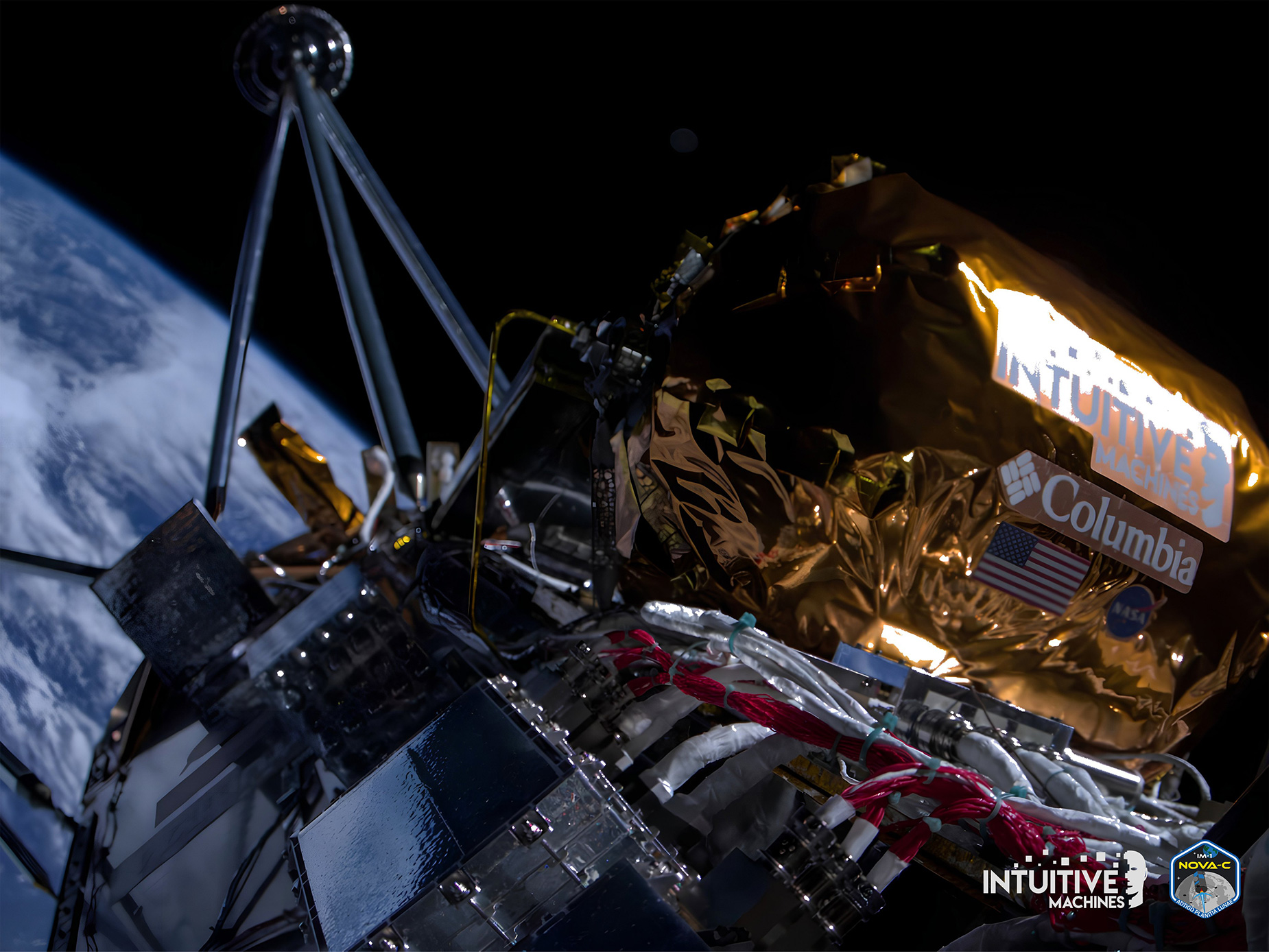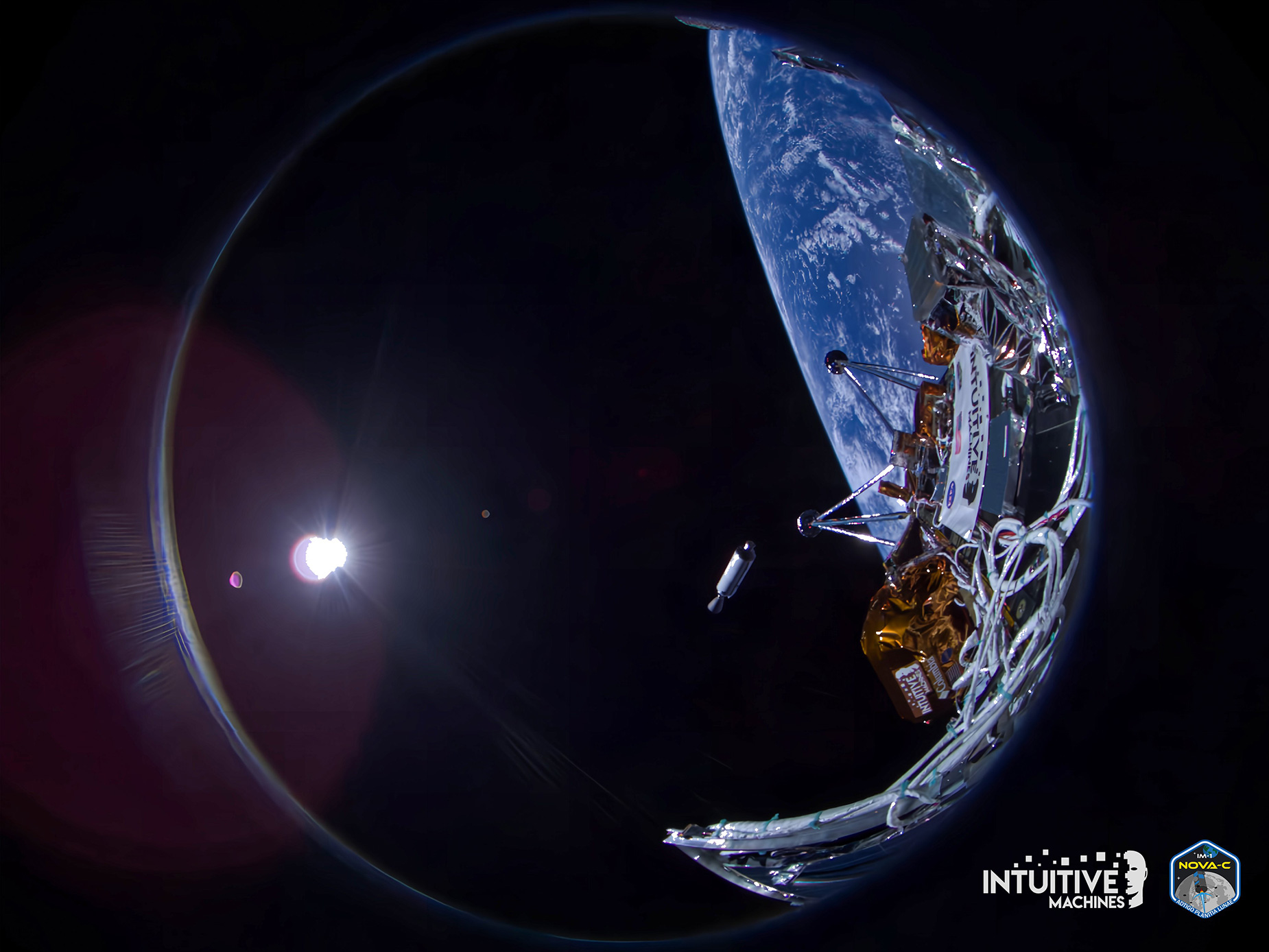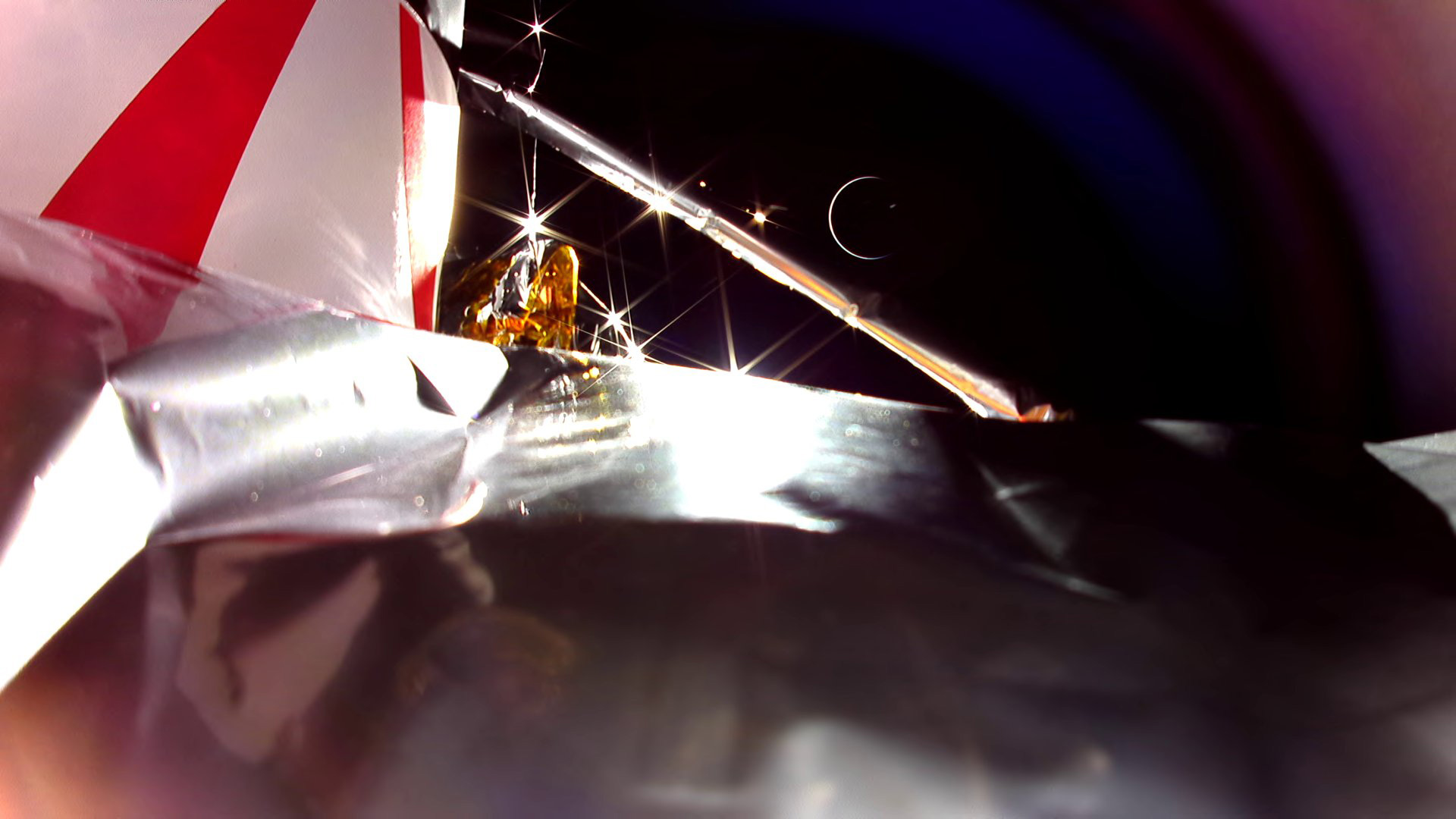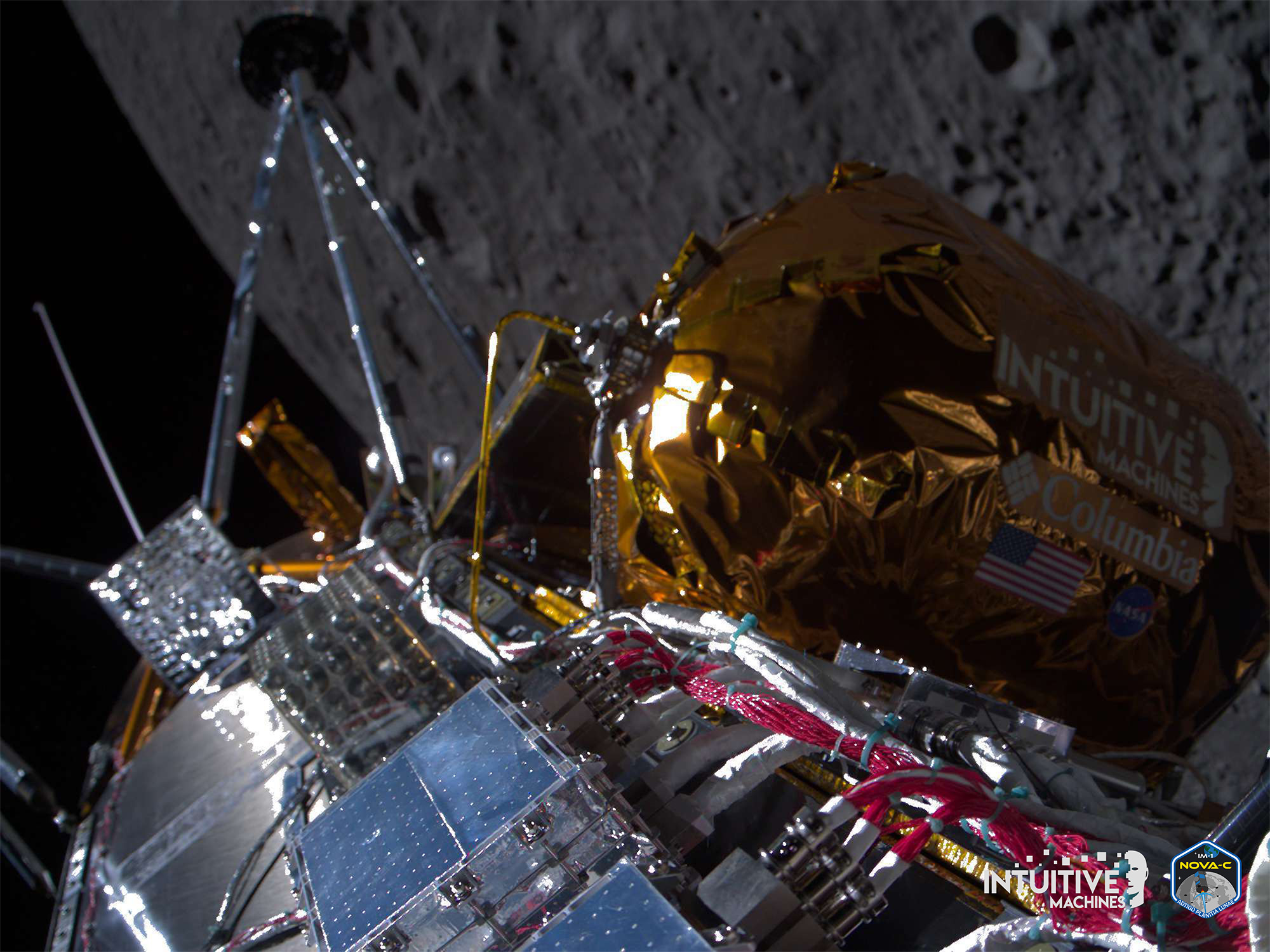
Even before Odysseus makes its thrilling plunge down to the lunar surface, the spacecraft is enduring a brutal environment as it circles the moon.
The spacecraft is expected to make around 12 complete laps around the moon, and each one puts the lander through wild temperature swings, according to a fact sheet from the company.
“When the lander is on the sunward side of the (lunar) orbit, the sun heats the lander on one side, but the Moon also bakes the other side of the spacecraft with reflected infrared radiation, so Odysseus is very warm," according to the company. "Then, the lander passes into the lunar shadow, and the vehicle plunges into a deep cold regime and requires heater power drawn from batteries to keep systems warm.”
Lunar orbit also brings communications challenges.
As Odysseus orbits, ground controllers have about 75 minutes of communication with the spacecraft before it travels to the far side of the moon, where it's out of reach for about 45 minutes before swinging back to the near side.




